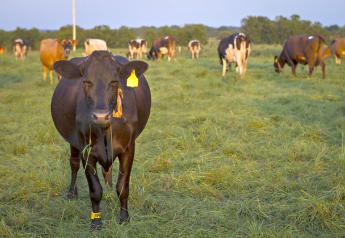Cattle Outlook: Pasture Values Increasing

Pasture values are increasing at a faster rate than cropland. The trend could continue with on-going profitability in the cattle market.
By: Ron Plain and Scott Brown, University of Missouri
According to the Land Values report released last Friday the value of an acre of pasture climbed by 11.1% to average $1,300 per acre in the U.S. in 2014. Growth in pasture land value exceeded that of cropland value (up 7.6% to $4,100 per acre) for the first time since 2009 and only the second time since 2006. Given the profitability expectations for raising calves vs. crops for the next couple of years, pasture values may continue to improve relative to cropland values in the next few annual surveys as well.
USDA released monthly meat trade data for June this week, and for each of the first six months of 2014 beef exports have exceeded the year ago level. Year to date export levels are 4.7% above 2013 despite sharply higher U.S. beef values. Beef imports are also up for the year, 12 percent above last year’s pace. In the second quarter of 2014 beef imports from Australia were at their highest quarterly level in five years, while product imports from New Zealand had not been that high since the first quarter of 2004.
Choice boxed beef cutout values were down this week. The boxed beef cutout value for choice carcasses this morning was $261.33/cwt, down $2.44 from last Friday but $72.84 (38.6%) higher than a year ago. The select cutout declined to $253.69/cwt on today’s morning report, down $5.02 on the week but up $71.74 from a year earlier. The choice-select spread widened for the second consecutive week to $7.64/cwt.
Fed cattle prices followed the beef cutout down. Through Thursday, the 5-area average price for slaughter steers sold on a live weight basis was $160.75/cwt, down $2.22 from last week’s average but up $38.38 vs. a year ago. The 5 area average dressed price for steers retreated $4.67 for the week to $253.47/cwt.
Cattle slaughter totaled 573 thousand head this week, down just one thousand head from the week before but 8.8% less than the same week last year. Year to date cattle slaughter is trailing the 2013 pace by 7.0%. The average dressed weight for steers slaughtered the week ending July 26 was 870 pounds, up 1 pound from the week before and 8 pounds heavier than the same week last year.
Continuing good demand and limited numbers pushed feeder cattle prices higher at this week’s Oklahoma City auction. This week’s prices for medium and large frame #1 steers by weight were: 400-450# $300-$323, 450-500# $269-$286, 500-550# $258-$286, 550-600# $227-$251, 600-650# $221.50-$259.35, 650-700# $223-$243, 700-750# $218.50-$234.85, 750-800# $215.50-$223, 800-900# $210.50-$229.75, and 900-1000# $210-$212/cwt.
Russia announced a ban on all food imports from the U.S. this week. Though beef exports to Russia have been negligible since late 2012, U.S. chicken shipments into the Russian market have accounted for roughly 7 percent of the U.S. total in recent history. With pork exports to Russia accounting for 5.4 percent of total U.S. pork exports during May and June 2014, the ban could result in some additional supplies of competing meats in the domestic beef marketplace until pork and chicken exporters find alternate buyers.
Cattle futures lost ground for the week, with some contracts down the limit today. The August live cattle futures contract closed at $152.55/cwt today, down $4.75 on the week. October fed cattle settled at $150.00/cwt, down $6.00 for the week. The December contract ended the week at $150.25/cwt. February settled at $151.10/cwt.
The August feeder cattle contract dropped $4.95 this week to end at $215.32/cwt. September feeders settled at $214.72/cwt today, down $5.18 from the previous Friday.







